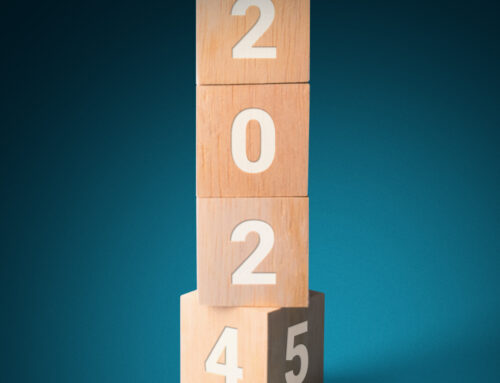
Increasingly in the news, we are hearing more and more about the risks that unhealthy breeding practices in dogs pose to animal welfare, and the need for stronger regulations. These concerns spill over into marketing practices, with several governing bodies discouraging the use of some of the worst offending breeds in marketing materials. But is their absence having an impact?
In this blog, we discuss the dilemma further, focussing on the use of dogs in marketing and the rising scrutiny facing certain breeds.
The dangers of breeding for aesthetics
Did you know that some of the most popular pet breeds in the UK are prone to severe health conditions? And with the pandemic and resulting boom in pet adoptions, increasing the demand for these breeds,1 the problem is only getting worse.
While the issue appears to be coming to a head in the media, this is an animal health crisis hundreds of years in the making. Many of the popular breeds we all recognise today once looked very different. Decades of selective breeding for certain ‘desirable’ cosmetic features has in many cases lead to the development of genetic health issues,2 or in extreme cases a body that is no longer fit to support the animal. Some breeds even struggle to give birth to their young without medical intervention.3
Some of the worst affected dogs belong to brachycephalic breeds. These are flat-faced dogs, often recognisable for their large, wide-set eyes and skin folds. Common brachycephalic breeds include pugs, English bulldogs and Frenchies.
But brachycephalic animals aren’t the only dogs to fall prey to these poor breeding practices. The issue is that some of the most risk-inducing characteristics are seen as cute features of these dogs, such as:
- Long bodies with short legs – the typical example of this would be the dachshund, affectionately nicknamed the sausage dog. Unfortunately, these proportions can lead to spinal issues such as intervertebral disc disease (IVDD), which occurs in 25% of dachshunds!4
- Short muzzles or flat faces – this defining feature of brachycephalic dogs can lead to narrowed airways, meaning many of these dogs will struggle to breathe normally.3
- Teacup breed variations – these tiny dogs are created through breeding the smallest pups of the litter with the aim of creating the smallest dog possible. Unfortunately, breeding the runts of litters together increases the risk of hypoglycaemia and heart defects in the offspring.5
- Bulging eyes – another feature of brachycephalic dogs, their protruding eyes are at risk of physical injuries. The eyelids are also often unable to close properly, leading to dry eyes.6
- Skin folds – excessive skin folds are seen in breeds such as the English bulldog or the Chinese shar-pei. Unfortunately, they can also predispose the dogs to skin fold dermatitis.7,8
The risk to the health of these breeds is recognised, and efforts are being made to discourage unhealthy breeding practices.

What are the current regulations?
One of the methods of lowering the demand for these dogs and thus discouraging their breeding, is through minimising their presence in the advertising space, particularly when it comes to animal health related industries.
While no legal regulations are enforced in the UK, the British Veterinary Association sets out guidelines for the use of animals in marketing materials.9 These guidelines encourage marketers to consider the following 5 essential welfare needs when using any depictions of an animal in their materials:
- A suitable environment
- A suitable diet
- The need to exhibit normal behavioural patterns
- The need to be housed with, or apart from, other animals
- The need to be protected from pain, suffering, injury, and disease
This final point is pertinent when choosing which breeds to include, with marketers asked to consider whether the animal shows ‘any physical characteristics that can negatively impact on its health and/or cause suffering.’
However, the BVA does caveat that it is occasionally necessary to break these regulations for animal health and welfare education, or to promote products that target these specific health conditions.
The argument for breed censorship
Be it in animal health marketing or any other industry, the main concern is that portraying these breeds as quirky and cute, without including information on their health risks, is raising their profile, and fuelling their demand.
The power that advertising has over breed popularity has been demonstrated before. In India, the mobile phone network Hutch became known for their mascot Cheeka the pug, who was introduced in their now iconic 2003 advert of a little boy and his companion.10 The advert was a hit, and made Cheeka a mainstay of their brand, even remaining when Hutch was acquired by Vodafone India in 2007.
This advert brought an interest in pugs to a new audience, causing their prices to soar in the following months and their sales to double.11,12 Unfortunately, concerns were raised that those rushing to purchase the dogs were not properly informed of their health issues.11 These concerns later resurfaced in 2018, when Vodafone India reintroduced pugs to their marketing strategy with a new advert.13
While the adverts may paint pugs in a positive light, a 2022 Royal Veterinary College study recently revealed that the health of pugs is ‘substantially different and largely worse’ than other breeds of dog, calling for urgent action to reduce the health risks associated with the breed.14 This is a far cry from the perfect companion portrayed in the media.
As a response, campaigns such as #EndTheTrend by The Blue Cross are pushing for leading brands to commit to phasing out the use of brachycephalic pets in their advertisements by the end of the year.15

The argument against exclusion
With some countries going as far as to call for a complete breeding ban for brachycephalic dogs,16 their exclusion from advertising may seem like a tame intervention by comparison.
But many owners of these breeds are still strong advocates, arguing that their dogs are still capable of living healthy lives, and that there are other ways to tackle problematic breeding rather than keeping them out of sight.
A survey of these owners revealed that14:
- 93% of brachycephalic owners would still opt for the same breed again if they were to get another dog – so the demand will be there regardless of marketing efforts creating any further awareness
- 66% of these owners would also recommend their dog breed to others, sparking interest regardless of their presence in marketing material
Beyond this, does the absence of these breeds actually tell us anything? With the rising popularity of these animals, prospective dog owners will see them around in their day to day lives regardless.
Perhaps an alternative approach would be to focus on current and potential owner awareness campaigns, providing educational content on the health needs and risks associated with these breeds, rather than removing them from the conversation altogether.
Alternatively, why not add mandatory disclaimers to the adverts that feature these breeds, solving the issues of their portrayal conflicting with reality and being too promotional of the breed.
What does this mean for your marketing campaigns in practice?
In practice, it’s important as marketers, particularly when working in an animal health field, that we follow the regulations set out by the BVA. This means focussing more on traditionally ‘healthy’ breeds in our materials as opposed to those with brachycephaly.
However, with consideration to the popularity of these dogs, it’s important not to alienate or create campaigns which are too biased against their owners, at the risk of them becoming disengaged with your brand.
Ultimately, while following the regulations, it’s important not to forget that the owners and lovers of these dogs are also seeing these materials and make up an important part of your audience.
For more content on animal and human health, digital healthcare, marketing best practice and much more, visit our blog.








